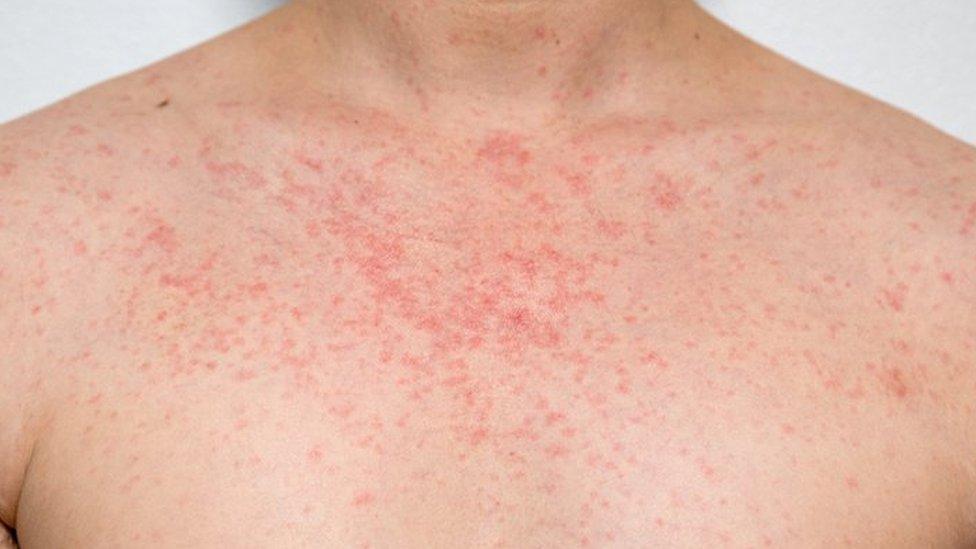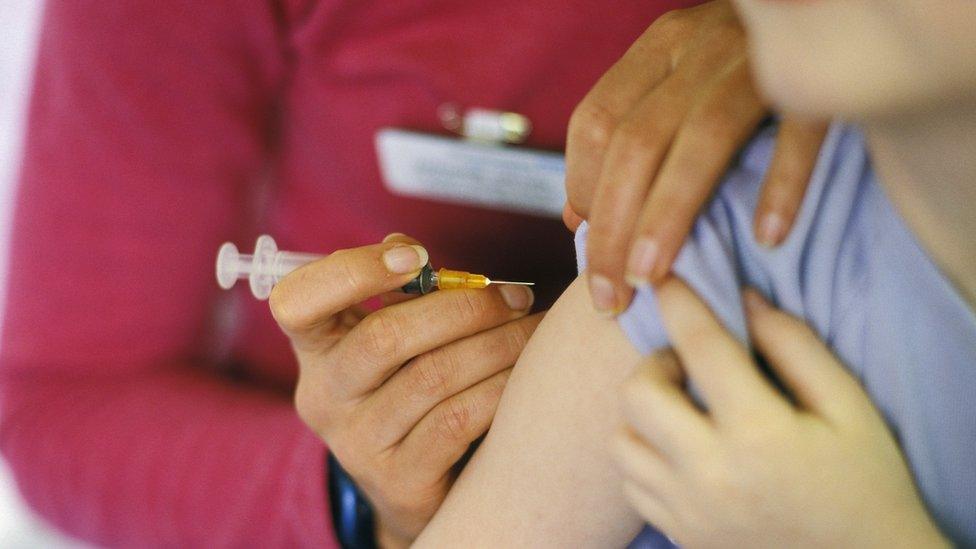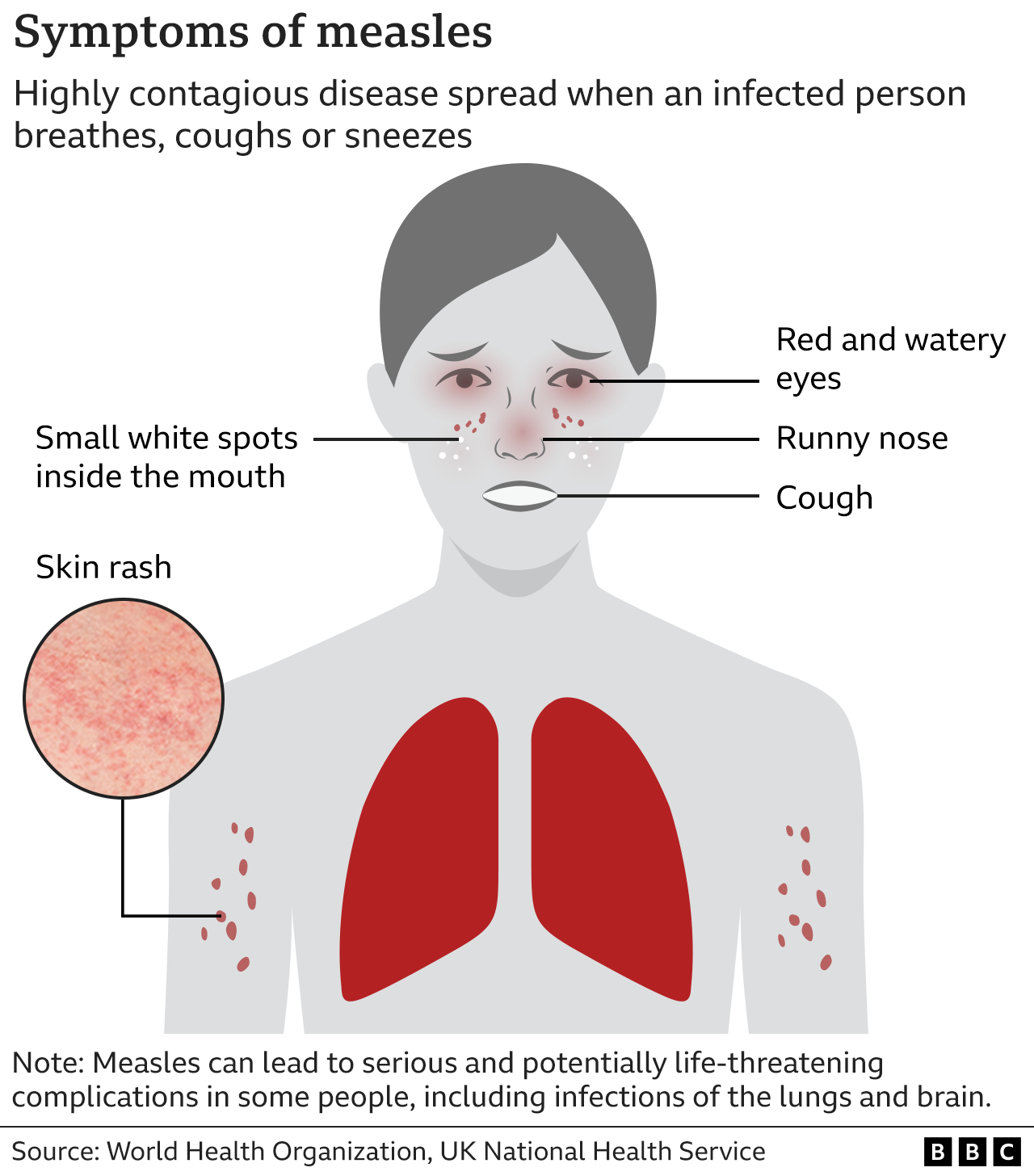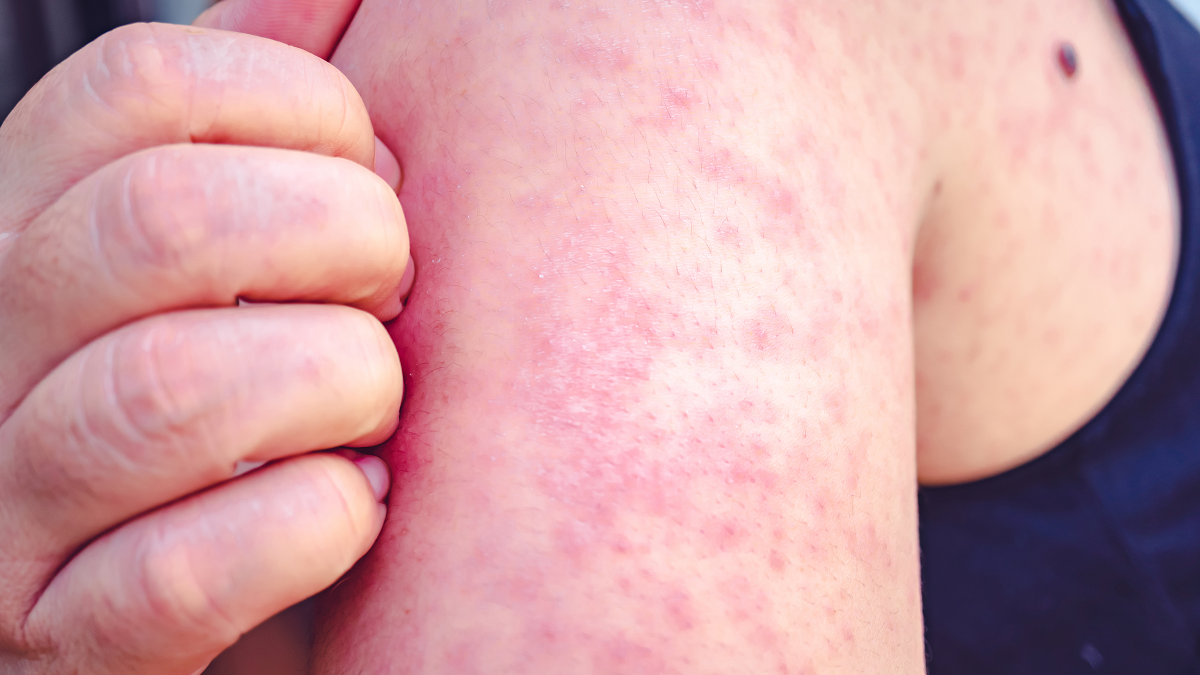Measles: Third case in Irish Republic after Abu Dhabi to Dublin flight
- Published

The main symptoms of measles are a fever and a rash
Health officials on both sides of the Irish border have issued an appeal after a case of measles was confirmed on a flight from Abu Dhabi to Dublin.
The Etihad Airways plane arrived at 06:30 GMT on Saturday.
It is the third case of measles to be confirmed in the Republic this year.
The Public Health Agency (PHA) said anyone from Northern Ireland who was on the flight and is at higher risk of severe illness from the disease should contact them.
Those who are at greatest risk are those who were on Etihad Airways flight EY045 and are:
Children under 12 months old
Pregnant women
People who are immunocompromised
Those who were on the flight and are at greatest risk of severe illness from measles are asked to contact the PHA on (028) 9536 8300.
In February it confirmed that a case of measles was diagnosed in Northern Ireland, the first in seven years.
Cases have been rising across Great Britain and Ireland.
It comes after the death of an adult who had contracted measles in the Republic of Ireland earlier this month.
That has sparked increasing concern among authorities of a potential island-wide outbreak and heightened concern of dropping vaccination rates.
The department previously said official figures showed the uptake of the measles, mumps and rubella (MMR) vaccine in Northern Ireland was behind that recommended by the World Health Organisation (WHO).

The World Health Organisation recommends 95% of children receive both doses of the MMR vaccine by the age of five
Almost 89% of children in Northern Ireland have received their first MMR jab, but fewer return for the second dose with only 85% of children fully vaccinated by five years old. The WHO recommends a 95% vaccination rate.
A PHA vaccination catch-up campaign is now under way in Northern Ireland.
The PHA is urging children and young adults who have not received both doses of the MMR vaccine to do so as soon as possible, to reduce their risk of catching and spreading measles.

What are the symptoms of measles?


Incident Room: Measles Outbreak: Why now?
BBC Health reporter Smitha Mundasad examines why the virus is back in the UK and what can be done to get rid of it.

Related topics
- Published20 February 2024

- Published8 February 2024
